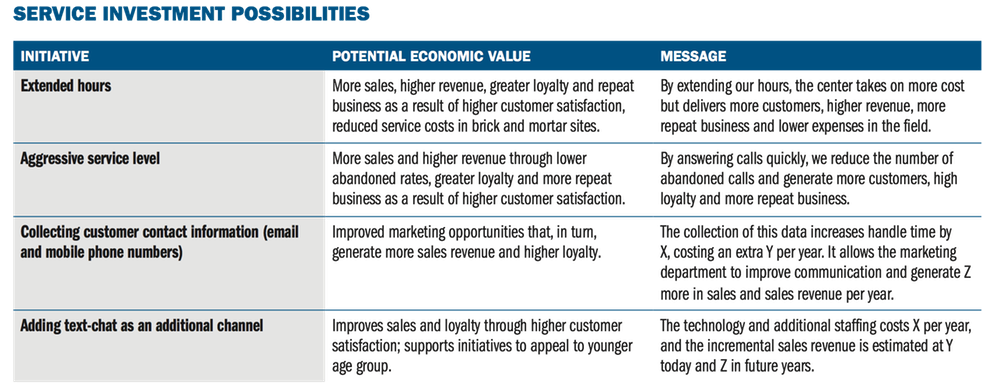
Every organization is different, and one area where those differences are very pronounced is the value that the highest placed leaders apply to the contact center. Yes, some C-levels are “service enlightened” and do not need convincing that those dealing directly with the customer are (or at least should be) a key area of corporate attention. In other organizations, the contact center is merely one more cost center that only delivers value when handle time is reduced.
Working in one of those organizations where the executives recognize service as a differentiator certainly makes life easier on those of us in contact centers. The drawback, though, is that there is a pretty wide chasm between recognizing the theoretical value of great service and understanding the direct line from enhanced service efforts to a more robust bottom line. When executives do not understand the impact we deliver in economic terms, we run the risk of being devalued—regardless of what our vision or core values might state. Our task, then, is the same no matter your current standing in the organization. We need to educate our executives on the value we deliver.
Activities That Deliver Economic Value
The fact is, for most contact centers, the main reason why executives are not tuned in to our economic value is because it simply has not yet been defined in those terms. Strategic documents focus on improving customer satisfaction and Net Promoter Scores, and our performance reporting focuses on tactical, logistical items such as volume and handle time. We need a way to more accurately define and communicate how our extra effort—the better technology, the more advanced training program, the revised IVR menu—makes a financial difference.
The best way to identify these difference makers is to ask a key question: How does the impact of our approach compare to the results we would get if we simply tried to minimize contact center cost? The answer to this question gets to the heart of what an executive wants to know: the ROI that is being delivered on the added investment in service.
To identify those opportunities, think in terms of the last part of the last sentence. Where have you made extra investments in service? Some are obvious, such as technology purchases. Others are less obvious but just as applicable, such as adding a week to a new-hire training program. The table below is a “starter list” of the investments you can consider. While all items on the list may not be applicable to everyone, it should be enough to get you started on your own.

Charting the Contribution
Once those key investments have been identified, your next task is to bring the economic impact to light. This part of the process is about education, not reporting. You need a way to get the attention away from yesterday’s abandoned rate and shift it toward the returns being delivered today.
In order to change the conversation, consider charting the impact of your service investment decisions. You can do this by comparing what actually happened as a result of these decisions to what would have occurred if the investment decision had not been made. The chart typically works best when it is visual, accompanied by a few data points. The key is to identify the areas where you are generating considerable value compared to the alternatives. The illustration below shows a visual way to express the value of a sales contact center employing extended hours. The graphic gets across the main point—by being here for our customers, we positively impact the bottom line.

Reinforcing the Message
While contribution charts can provide the education, it is our reporting that reinforces the message. Using our contribution charts, we need to make sure that our regular reporting (whether monthly, quarterly or annually) draws upon the message we are sending. If after-hours sales is one of our key sources of value, our reports to executives should show the results this produced. That should be accompanied by a number of other key initiatives that are driving economic value.
When putting this type of reporting together, it obviously helps to have numbers that show an impressive return. Do not think, though, that you have to justify an entire department budget with this type of reporting. Your focus is on the incremental investment, over and above the minimum it would take to run a very basic center focused entirely on driving down costs.
Promote Value Over Volume
Many of the executives in the C-wing have not had the benefit of working in the contact center. Without that direct education, it is difficult for them to understand exactly what we do and how it contributes to the overall health of the organization. If we take care to make sure that our upward communication and reporting promotes value over basic volume and production, we can take those first critical steps away from the cost center mentality.



